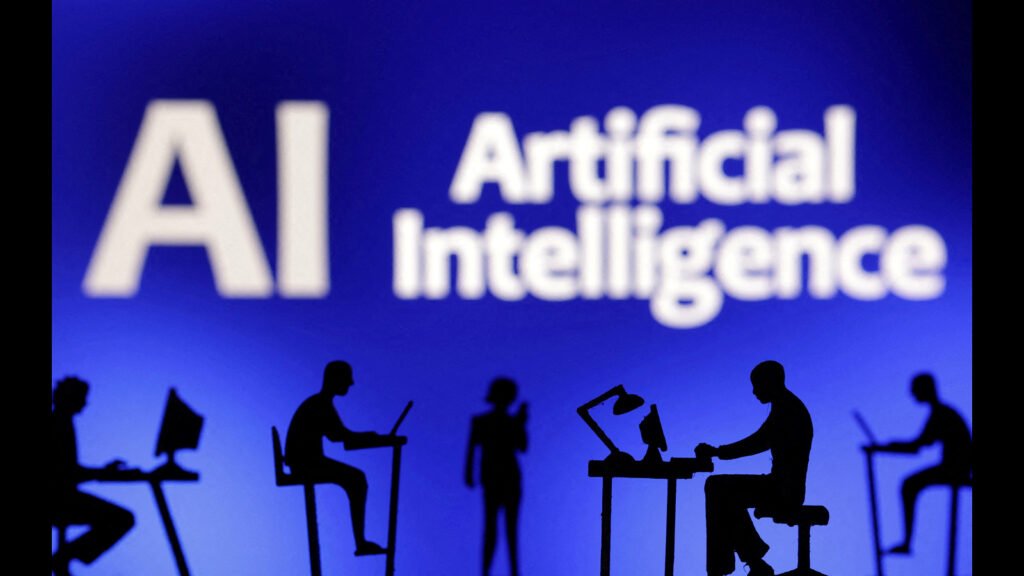
The Paris Ai Summit Earlier this month inked an agreement on Inclusive and Sustainable Artificial Intelligence (AI). With 61 Nations and Organizations Signing the Agreement, The Real Success of this Summit was its ability to align global efforts and reinforce ai’s diversity, both in terms of geography and prespects.

While the absence of the US and uk has been a talking point, the focus should be on the broader impact of global ai cooperation. Disagreements on governance are natural in Such Transformational Discussions. However, Each Dialogue and Declaration is moving the needle forward in shaping ai’s future. A Pivotal Moment of the Summit was when Prime Minister Narendra Modi Outlined a Bold and Inclusive Vision of Ai and Elaborated on How Ai Development is Deeeply Interdendent COLLY INTERDENT ACOROSS BORDERS BORDERS BORDERS and Govern And why governance must not solyly focus on managing risks but should also promote innovation, ensure inclusivity and drive equitable access. In this context, he advocated open and ethical ai.
India’s Digital Public Infrastructure (DPI) Stands as a Model for Scalable, Open and Cost-Effective Ai Depluement. In the corridors of silicon valley’s most powerful ai labs, a cardinal assumption – the scaling law, which dictates that an ai model’s performance improves with more Computing Power, Larger Data Sets, and Increased Parameters (More Capital) – has just been. The breakthrough came with deepsek, a chinese ai startup that developed and open-sourced a phonetier model-r1-for just $ 6 million-a stark contract to the over $ 100 milling Openai’s GPT-4. Sam Altman, Openai’s CEO Publicly reacted by stating that he believes they are on the wrong side of history in the open-source debate.
The great ai inversion has taken root. Cost Efficiency wasn’t the only disrupt. Deepsek Shattered Another long-head assumption: Access to frontier ai models is expected. It is offering its ai model via an api at 55 cents per 1 million input tokens and $ 2.19 per 1 million output tokens. In comparison, Openai’s pricing for its flagship model o1 stands at $ 15 per 1 million input tokens and $ 60 per 1 million output tokens. This does more than make ai cheaper-it fundamentally changes who can access and experience with cutting-edge models.
Beyond Cost Efficiency and Accessibility, this Inversion is About An Alternative AI Evolutionary Path. The notion that advanced ai requires massive, centralized resources is crumbling. In its place, an alternative path where openness, collaboration, and democratization have become the driving forces of ai innovation, freeing progress from the monopoly of a fee. Yann lecun, the turning award-winning scientist behind meta’s llama model, remarked that “Open-Source Models are surpassing proprietary ons.”
The global landscape had Hed Hiterto Been Shaped By Closed, Proprietary Ecosystems that Limited Accessibility, Reinforced Monopolies and Slowed Down Ai’s Ability to Adapt to Real-World Division. India’s Technology Policy, Instead, Has Built Digital Ecosystems that are open, accessible and scalable – Precisely what ai needs. INDIAI HAS Consistently Demonstrated A Unique Ability to Achieve More With Fewer Resources – Evident in isro’s Landmark Mangalyaan Mission, which redefined global standards for resource. Additional, India’s Technological EcoSystem is Deeply Rooted in a Culture of Openness, as Seen in the Digital Public Infrastructure (DPI) Societal Transformation, Fostering Innovation at Eoverry Level.
The government has announced that it will deploy 18,693 gpus across its ai ecosystem-notably, this is nine times Greater than whatseek utilized for it of Chatgpt’s Compute Capacity – While also also implementing measures to reduce computation costs beLow 100 per hour. Further, the government has announced the establishment of a data bank for ai, offering results, startups, and developers access to high-quality, diresets essent for intelight and intended AI solutions. These interventions come at a Pivotal Moment, as the World Witnessed a Compeling Demonstation of How Optimized Resource Utilization Can Unlock Transformative Possibility.
India has built a strong foundation in the ai realm. With 420,000 Employees in AI-Related Rings and A 14-Fold Increase in AI-Skilled Professionals Over the Past Seven Years, India Now Boasts of the World’s Highest Enterprise AI Adoption Rate, AT 92% and The World’s Second-Larges Ai Developer Community.
Unlike the proprietary, closed ai ecosystems emerging in silicon valley, India has pursued digital transformation with a commission to transparency, interoperability, and colyctive evils. This committee to openness is alredy evident with dpi – from Aadhaar and UPI to even bhashini – which is now supplied more than 22 languages and have processed Over 100 Million Inferences. By strategically fostering this Same Ethos Within India’s evolving ai ecosystem, we can ensure the design, development, and deployment of cutting of cutting-on models While Positioning ai as ai as ai as ai. Crucially, this approach will aid the technological future of ai worldwide.
The potential of an open and democratized ai ecosystem is already evident. More than just ensuring accessibility, such an ecosystem is a technical imperative for ai’s advancement itself. Progress in AI Capabilitys will depend on its interface with real-will complexity and diversity. For Ai to Remain Adaptable and Inclusive, It must Built by, Engaged With, and Utilized for a Broad Spectrum of Aspirations, Challenges, and Real-WORLD CONDITIONS. This requires contributions from a global network of reserchers, engineers, multidisciplinary experts, civil Society and academia, academia, each offering distinct percetices, Live Experiences, and Problem-Solving Approaches.
An open ai ecosystem fosters Such Sustained Engagement With Diverse Challenges, Shaped by the Needs of different Socio-Economic Contexts. Through Real-WORLD Testing Across Varied Applications, Industries, and Linguistic Landscapes, AI Systems Can Undergo Iterative Refinement-An Essential Process that NO Single Organization CAN REPLICATE Open ecosystems will allow ai to evolve dynamically, become more capable, resilient, and broadly applicable applicable as it interactions with an ever-corringing world. This great ai inversion is a reordering of power, access, and possibility. The erroneous belief that AI Progress will be dicted by scale and proprietary control has fallen. In its place, a new reality has taken shape – one where openness, collaboration, and democratization will bring the next round of benefits. For too long, the global ai race has been framed as a binary contest between the us and China. This narrative is obsolete. AI Leadership is no longer about who spends the most, but about who innovates smarter, scales faster and democraties ai for all citizens.
Amitabh Kant is India’s G20 Sherpa and Former Ceo, Niti Aayog.The Views Expressed Are Personal





